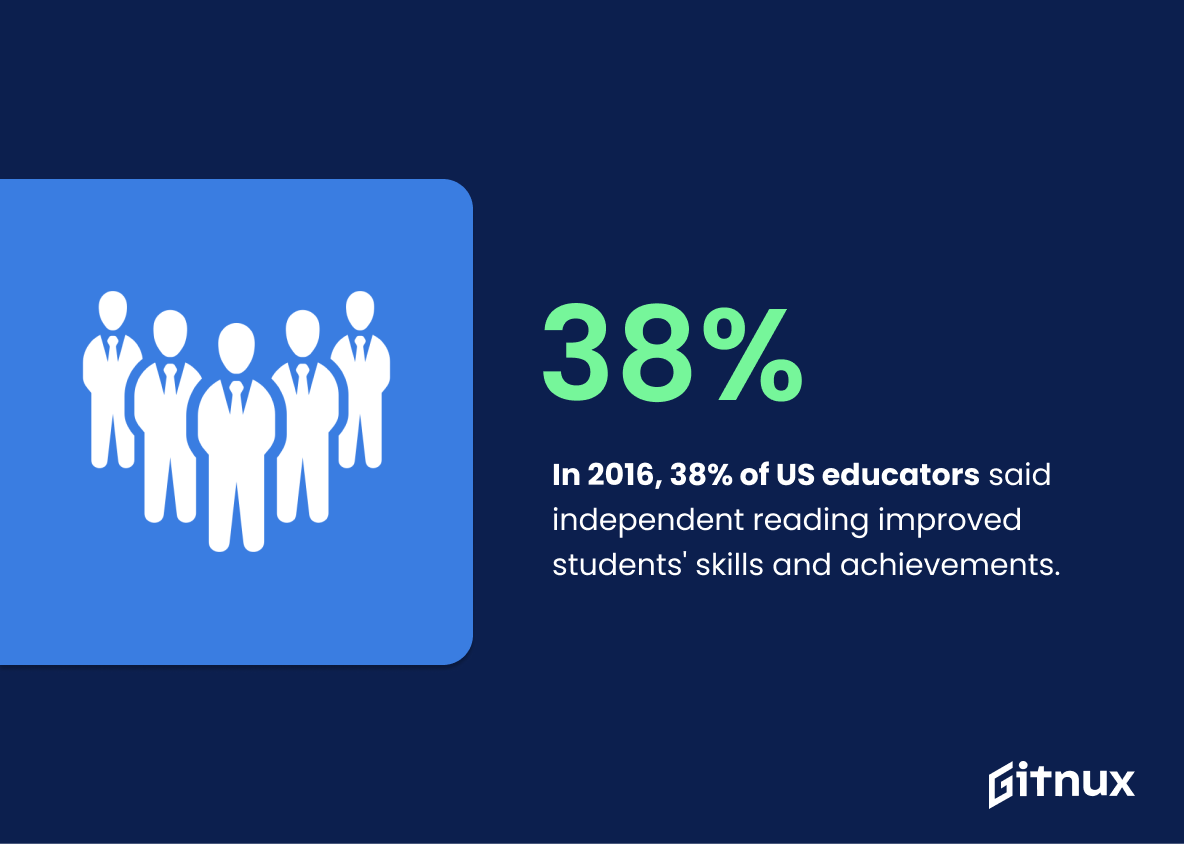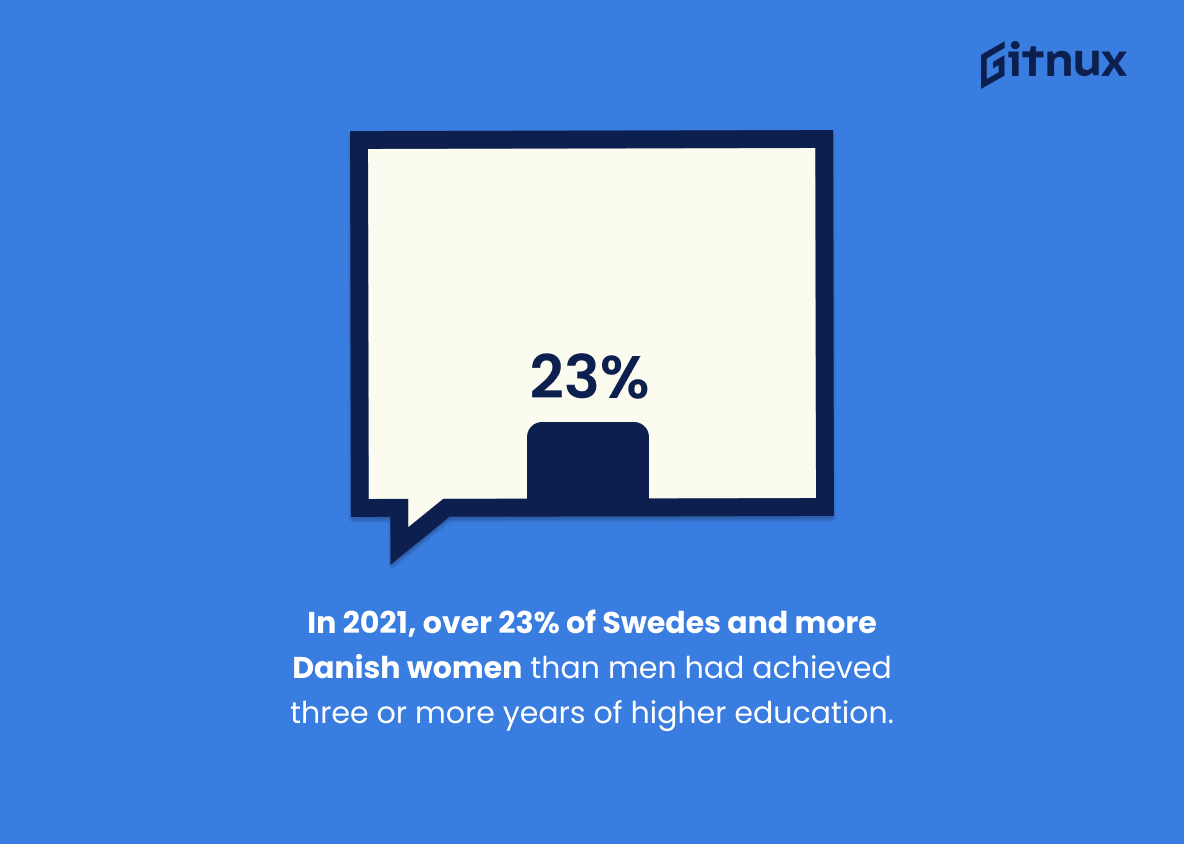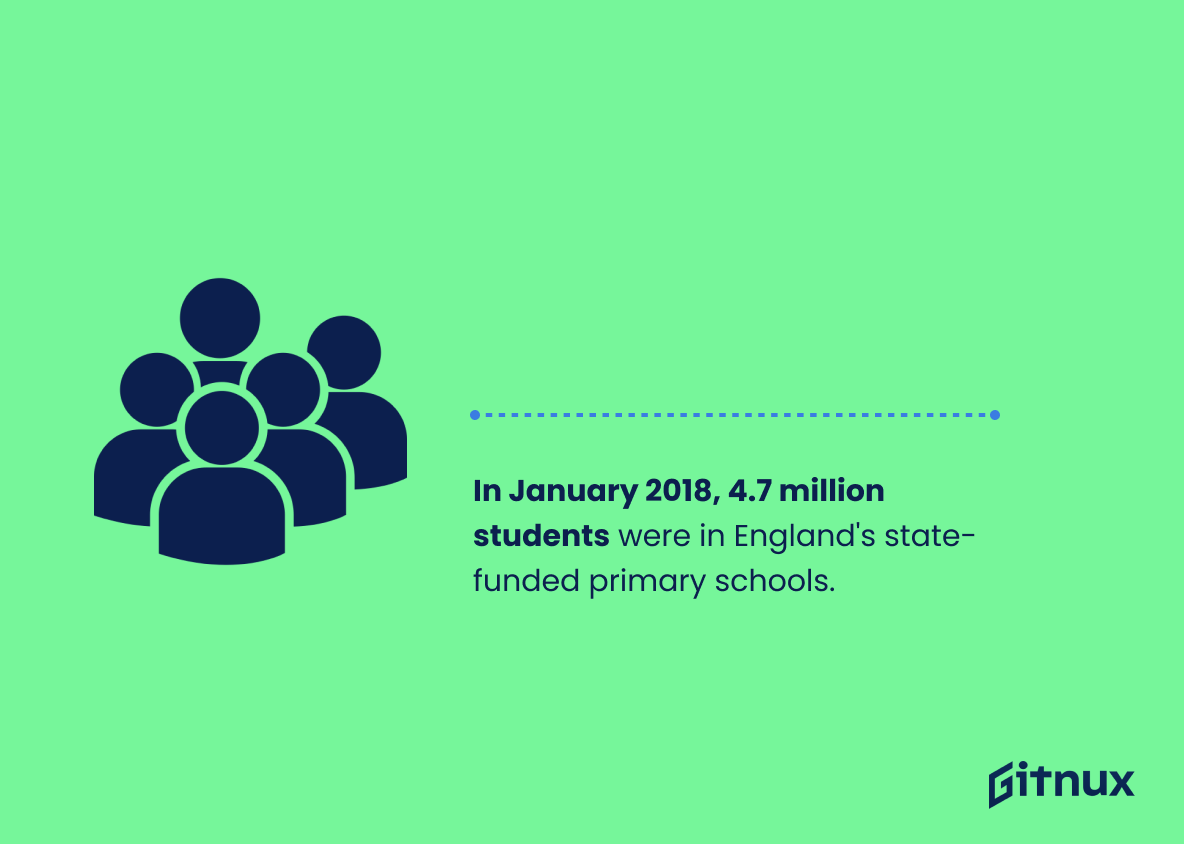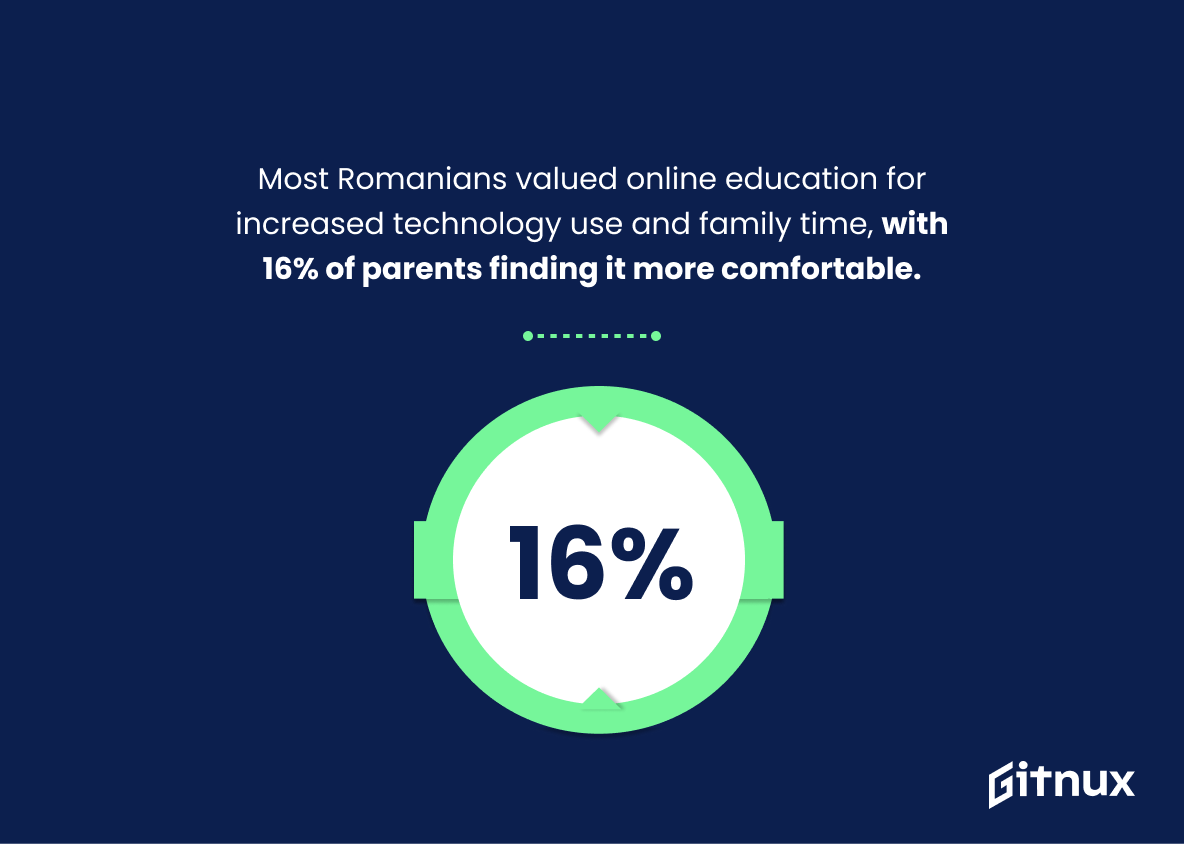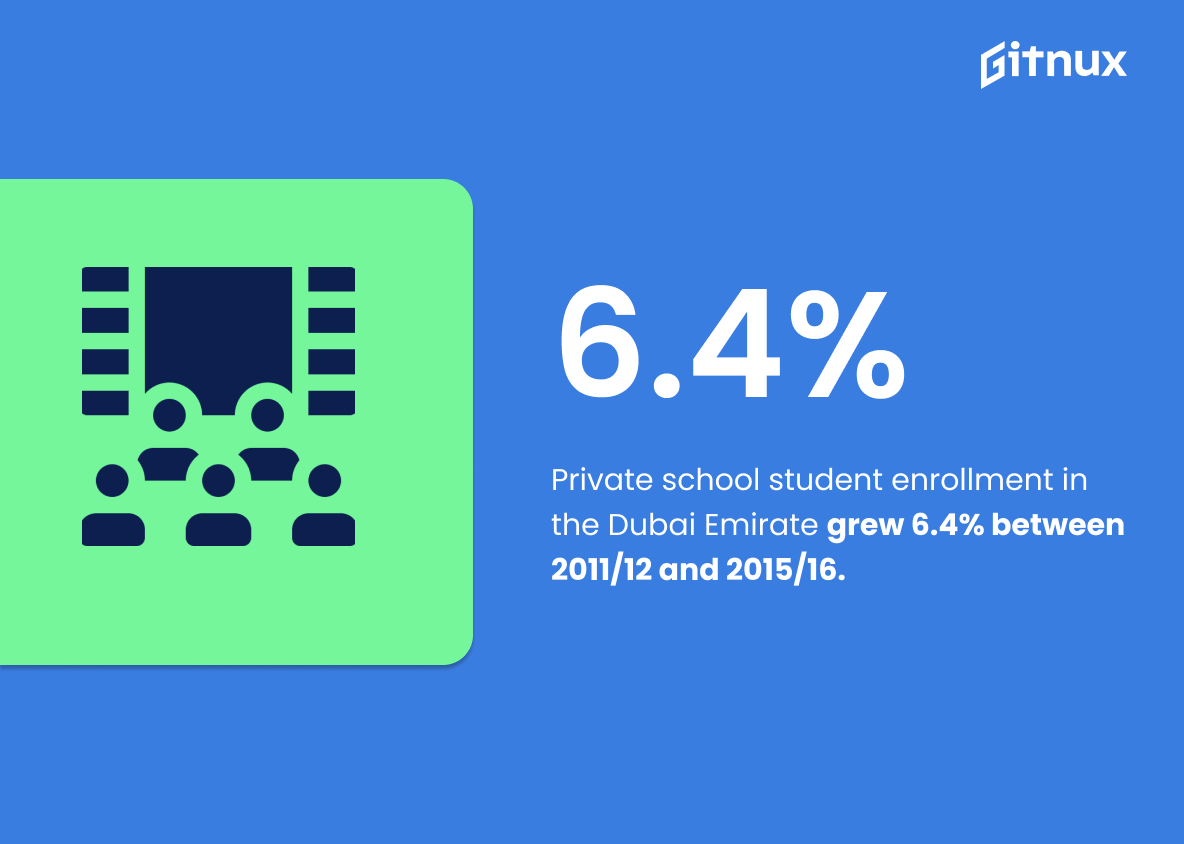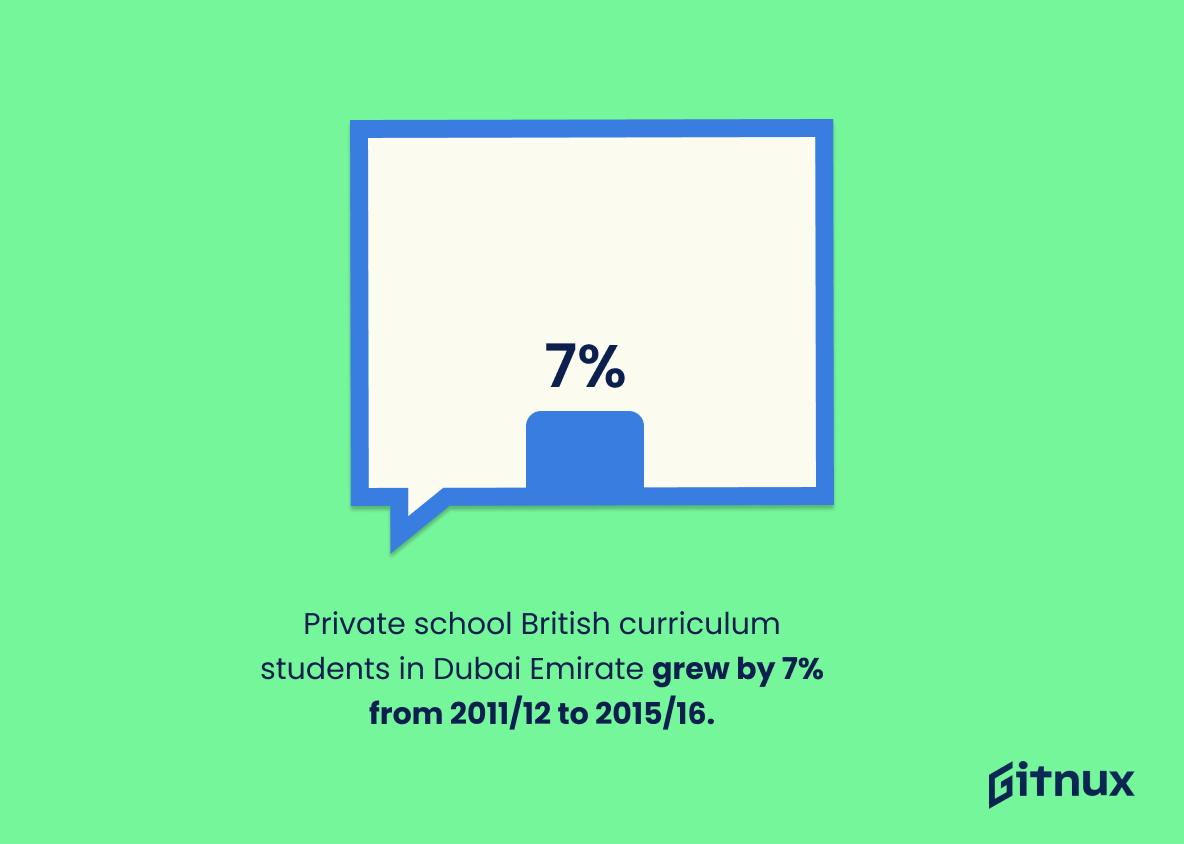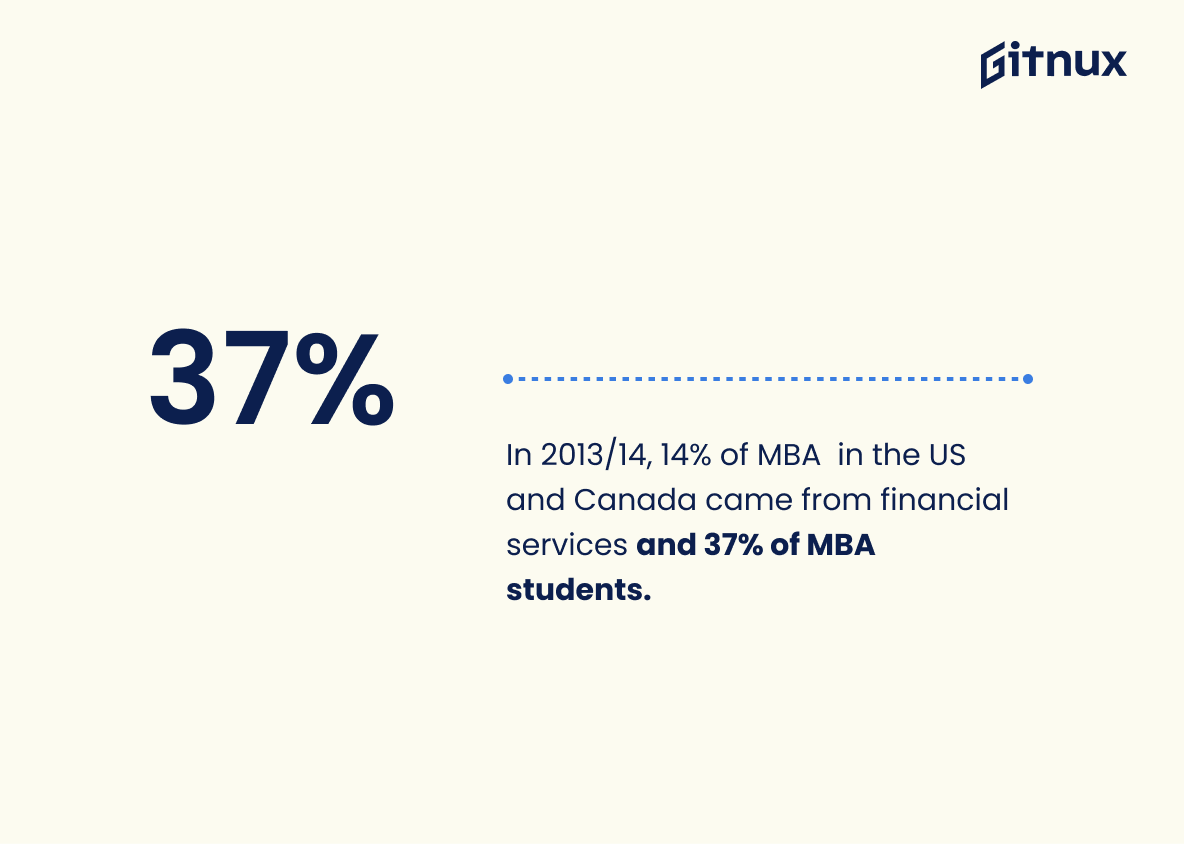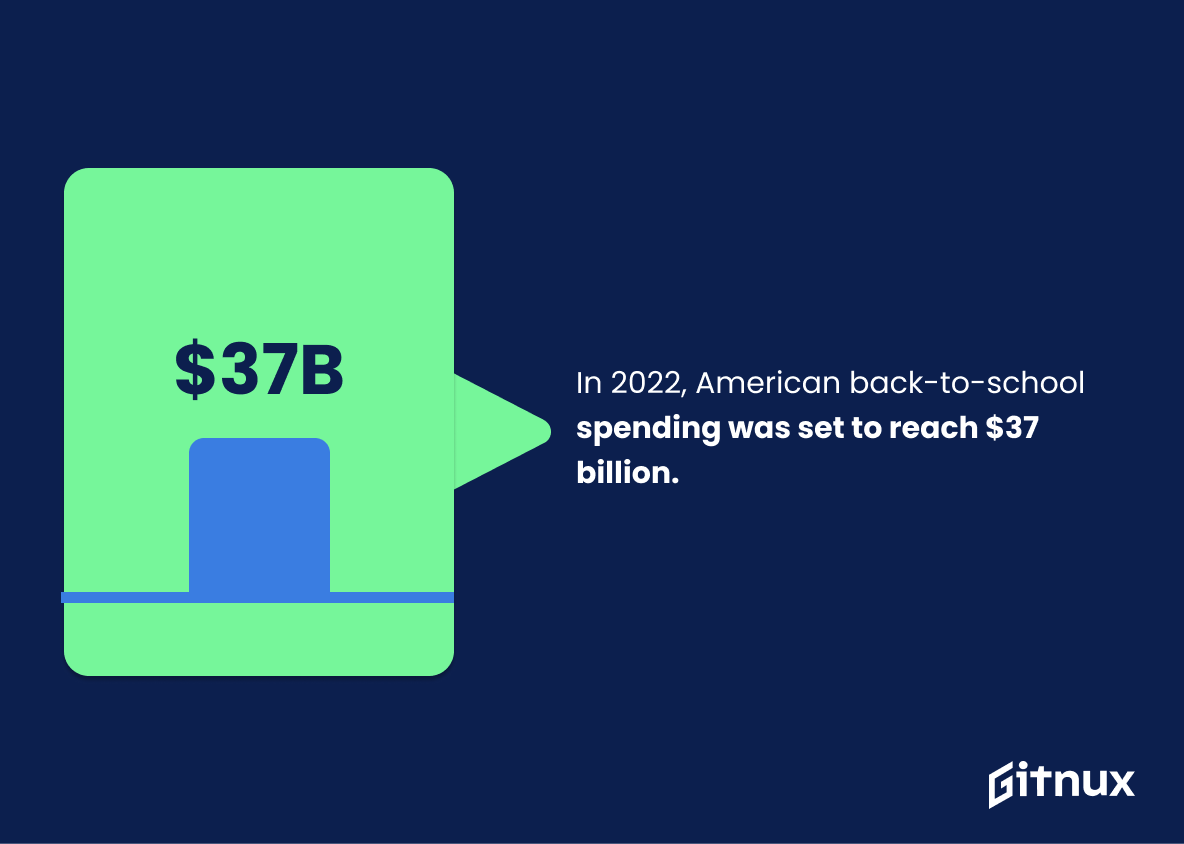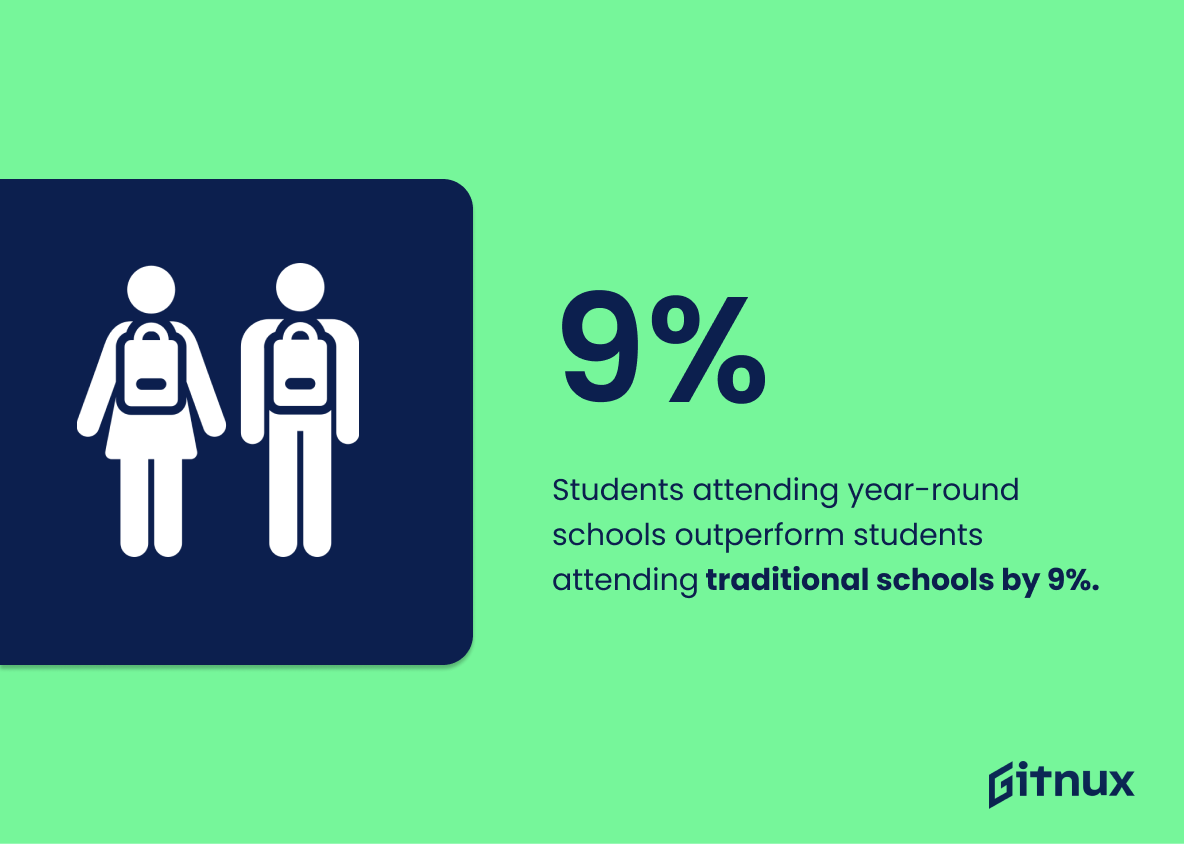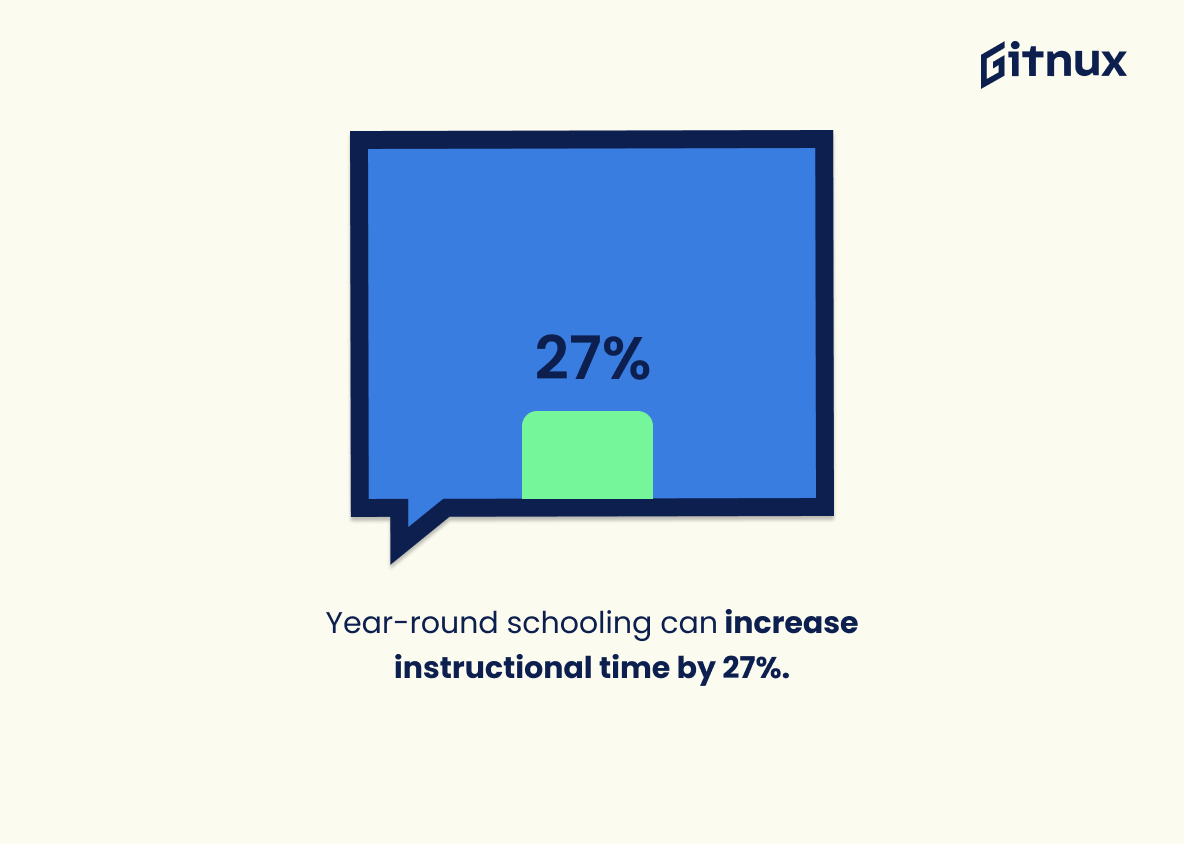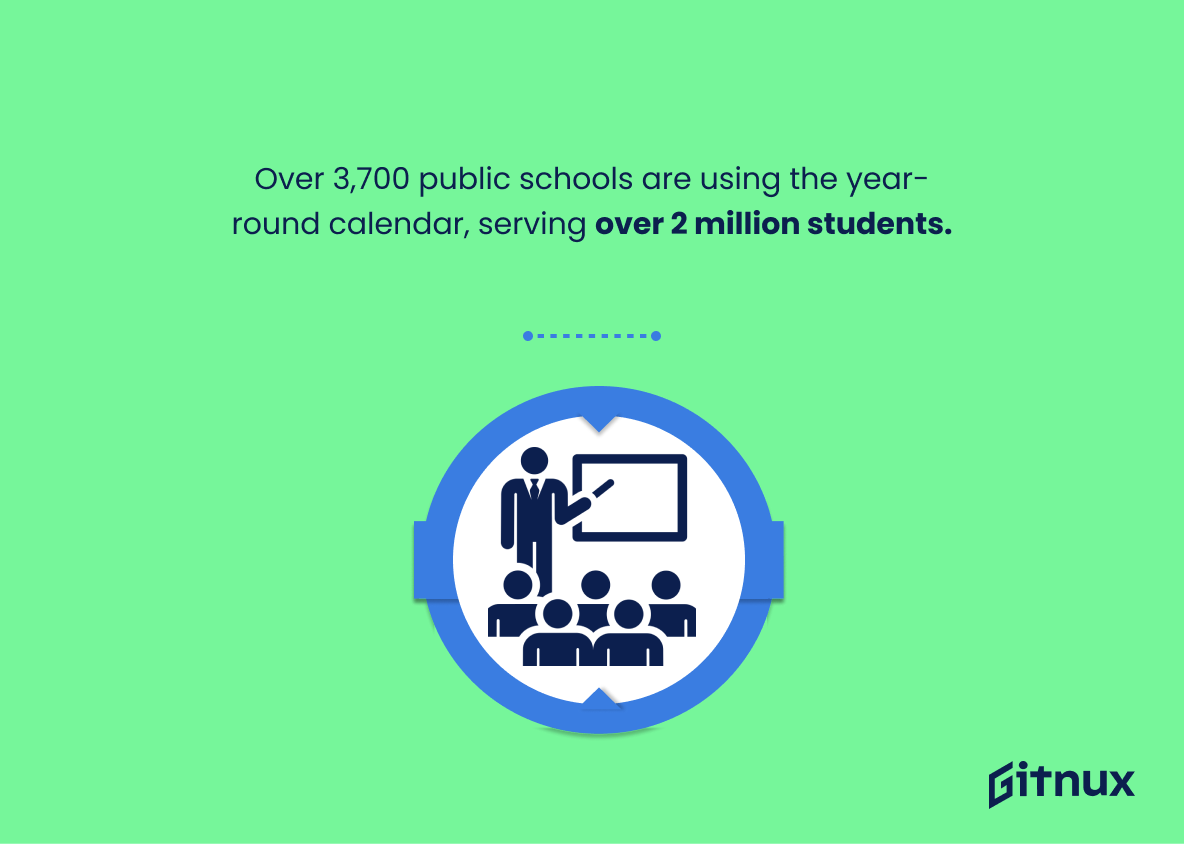Year-round school is becoming increasingly popular in the United States, with more and more schools making the switch from the traditional school year to a year-round schedule. The year-round school has many benefits, both for students and for schools.
In this article, we’ll explore the benefits of year-round school, as well as some of the statistics that support these benefits. We’ll also look at how year-round school can help to improve student performance and engagement. By the end of this post, you’ll have a better understanding of why year-round school is becoming more popular and how it can help your child succeed.
Benefits Of Year-Round School: Most Important Statistics
Private school student enrollment in the Dubai Emirate grew 6.4% between 2011/12 and 2015/16.
In 2021, over 23% of Swedes and a higher share of women than men in Denmark had attained a higher education of three years or more.
Benefits Of Year-Round School: Statistics Overview
4.7 million pupils attended state-funded primary schools in England in January 2018, the most of any type of school.
This shows the number of students attending school in England in January of 2018, which is an important indicator of the effectiveness of year-round school programs.
It also demonstrates the importance of providing state-funded primary schools, as they are the most attended type of school.
The number of schools in Poland decreased overall, but vocational schools increased.
There is a need for more schools in Poland, which could be filled by year-round schools. This would provide more educational opportunities for children and youth in Poland, which could lead to better educational outcomes and improved quality of life.
38% of educators in the US in 2016 reported that independent reading time increased students’ skills and achievements.
Independent reading time can have a positive impact on student achievement and that it is an important part of the school day.
This statistic can be used to support the argument that year-round school can be beneficial for students, as it provides more time for independent reading and other activities that can help improve student achievement.
The majority of respondents in Romania found that the most important advantages of online education were increased technology use and more family time; 16% of parents found online education more comfortable.
Online education can provide benefits beyond the traditional school system, such as increased technology use and more family time, which can be beneficial for students and parents alike.
Private school student enrollment in the Dubai Emirate grew 6.4% between 2011/12 and 2015/16.
The number of students attending private schools in the Dubai Emirate is increasing, which could indicate that the benefits of year-round schooling are being recognized and embraced in the region.
Private school student population in the Dubai Emirate following the British curriculum increased by 7% between 2011/12 and 2015/16.
There is a growing demand for private schools in the Dubai Emirate, which suggests that more parents are recognizing the benefits of year-round schooling.
This could lead to more schools adopting year-round schooling in the future, which could have a positive impact on student achievement.
14% of MBA applicants in the US and Canada had a background in financial services, and 37% of MBA students were pursuing their degree part-time in 2013/14.
Part-time MBA programs are becoming increasingly popular among students who are looking to advance their career.
This indicates that students are increasingly looking for flexible options that allow them to pursue their education while still managing their work and other commitments.
American parents, guardians, and children are expected to spend an estimated total of 37 billion U.S. dollars during the 2022 back-to-school shopping season, which is the same as last year and considerably higher than the previous 15 years.
The back-to-school shopping season is an important time for parents, guardians, and children to purchase the necessary supplies for the upcoming school year.
This indicates that parents are willing to invest in their children’s education, which is a positive sign for the potential success of year-round school initiatives.
In 2021, over 23% of Swedes and a higher share of women than men in Denmark had attained a higher education of three years or more.
The people in the Nordic countries are becoming increasingly educated, which indicates that year-round school programs may be beneficial in helping students reach their educational goals.
Searches for Sketchers shoes and Marks & Spencer’s school uniforms increased significantly during the 2019 back-to-school season in the UK.
This demonstrates that parents are willing to invest in their children’s education and are willing to purchase quality items for their children’s school needs.
Parents are likely to be more willing to invest in their children’s education if they are able to attend school year-round, as they will have more time to research and purchase quality items for their children’s school needs.
Supplementary Statistics
Students attending year-round schools outperform students attending traditional schools by 9%.
This demonstrates that students who attend year-round schools are achieving better results than those who attend traditional schools, and this is an important point to consider when discussing the benefits of year-round schooling.
Year-round schooling can increase instructional time by 27%.
With 27% more instructional time, students can benefit from more opportunities to learn, practice, and master the material they are studying. This can lead to improved academic performance and better preparedness for college and career.
Year-round schools show a 3.3% attendance increase.
Students are more likely to attend school when it is offered year-round, which can lead to improved academic performance and better educational outcomes.
Summer learning loss is reduced by around 25% in year-round schools.
Year-round schools are able to provide students with a more consistent learning environment, allowing them to retain more of the knowledge they acquire throughout the year. This is an invaluable benefit for students, as it helps them stay on track with their studies and reach their academic goals.
Over 3,700 public schools are using the year-round calendar, serving over 2 million students.
More and more schools are recognizing the potential benefits of this educational model and are taking steps to implement it. With over 2 million students now enrolled in year-round schools, it’s clear that this is an educational trend that is here to stay.
Year-round schooling can save districts over $5 million per year.
With such a large amount of money at stake, it is clear that districts should seriously consider the benefits of year-round schooling and the potential cost savings it can bring.
Year-round school students have higher retention rates of 4.5%.
Year-round school students have a higher rate of retention than those in traditional school systems. This suggests that year-round school systems are more effective in helping students stay engaged and retain the knowledge they are learning. This is an important statistic to consider when discussing the benefits of year-round school systems.
80% of year-round students feel more satisfied with the program than the traditional school calendar.
The majority of students who have experienced the program are overwhelmingly satisfied with it, indicating that it is an effective and beneficial alternative to the traditional school calendar.
Year-round schooling improves teacher retention by 6%.
Teachers are more likely to stay in their positions when they are able to enjoy the benefits of a year-round school system. This is important because it means that schools can maintain a consistent teaching staff, which can lead to improved student outcomes.
90% of students on a year-round calendar graduate on time.
This is an important statistic to consider when weighing the pros and cons of year-round school, as it demonstrates that students who attend year-round schools are more likely to succeed academically.
Schools that transitioned to year-round calendars saw a 5-11% decrease in building energy consumption.
By reducing energy consumption, schools are able to reduce their carbon footprint and contribute to a healthier planet. This is an important statistic to consider when discussing the benefits of year-round school.
After one year of year-round schooling, 44% of the students have improved literacy skills.
A significant portion of students have seen tangible results from the switch to a year-round school system, and that the benefits of such a system are real and measurable.
Year-round school schedules provide 8 to 15 more days of instruction per year.
With 8 to 15 more days of instruction per year, students can gain a greater depth of knowledge and understanding in their chosen subjects, as well as more time to explore new topics and develop new skills. This increased access to learning can be a major benefit for students, and is an important statistic to consider when discussing the potential benefits of year-round school.
84% of teachers in year-round schools report improved student achievement.
Teachers in these schools have seen a marked improvement in student achievement, which is a clear indication that the system is working. This is an important statistic to consider when discussing the benefits of year-round schooling, as it demonstrates that the system can have a positive impact on student learning.
Year-round schooling can save schools 15-33% on transportation costs.
Not only does it provide a financial incentive for schools to make the switch, but it also highlights the potential for increased efficiency and cost-effectiveness in the long run.
Low-performing students show an average of 12% increase in math scores in year-round schools.
Students who are struggling in math can benefit from the extended learning opportunities that year-round schools provide, resulting in a significant improvement in their math scores. This is an important statistic to consider when evaluating the benefits of year-round schools.
Remediation rates for students attending year-round schools can drop 29%.
Thus, students attending year-round schools are less likely to need remediation, which can lead to improved academic performance and better outcomes in the long run.
About 56% of school districts with year-round education programs show gains in student achievement.
When school districts implement these programs, they can expect to see an increase in student performance. This is an important point to consider when discussing the potential benefits of year-round school.
Conclusion
Year-round school is a great way to keep students engaged and motivated throughout the year. The statistics show that students who attend year-round school have higher test scores, better attendance, and improved academic performance.
Additionally, year-round school can help reduce summer learning loss and provide a more balanced learning experience. With all of these benefits, it is easy to see why year-round school is becoming increasingly popular.
References
1 – https://www.statista.com/statistics/715823/number-of-pupils-in-england-in-2016-by-school-type/
2 – https://www.statista.com/statistics/1168742/poland-number-of-schools-by-type/
3 – https://www.statista.com/statistics/742132/teacher-assessed-independent-reading-time-benefits-for-students-by-reading-benefit-us/
4 – https://www.statista.com/statistics/1202392/romania-advantages-of-online-school/
5 – https://www.statista.com/statistics/900969/uae-growth-rate-of-students-in-dubai-by-school-type/
6 – https://www.statista.com/statistics/901000/uae-growth-rate-of-private-school-student-population-in-dubai-by-curriculum/
7 – https://www.statista.com/topics/2175/business-schools-in-the-united-states/
8 – https://www.statista.com/topics/2143/back-to-school-statistics-and-facts/
9 – https://www.statista.com/topics/6842/education-in-scandinavia/
10 – https://www.statista.com/statistics/1110909/year-on-year-growth-back-to-school-online-searches-uk/
11 – https://www.openspace.org
12 – https://www.rand.org
13 – https://education.findlaw.com
14 – https://www.ascd.org
15 – https://www.edutopia.org
16 – https://yresp.wordpress.com
17 – https://www.urisa.org
18 – https://jeremylevine.com
19 – https://www.aasa.org
20 – https://education.stateuniversity.com
21 – https://www.nea.org
22 – https://www.nayre.org
23 – https://www.learningmatters.tv
24 – https://nces.ed.gov
25 – https://eric.ed.gov
